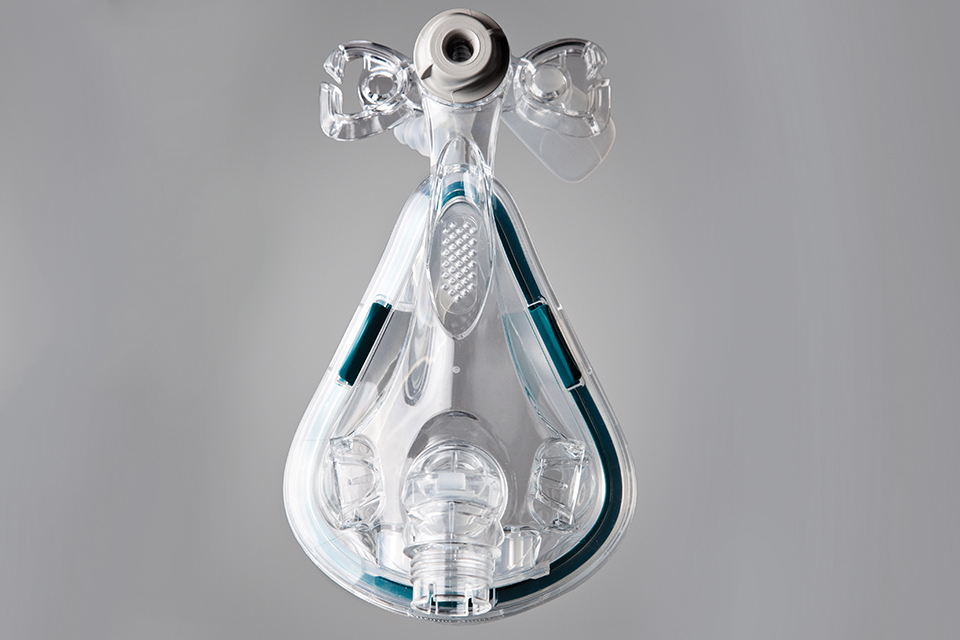Options for Opening Airways

You work out regularly, watch what you eat, head to bed at a reasonable hour, and generally strive to lead a healthy, active lifestyle. Yet, too often, you wake up fatigued and move through the day feeling tired, possibly overindulging in caffeine to stay alert. At night, you sometimes suffer from uncomfortable reflux or get up to use the restroom several times. Perhaps your bed partner comments on your loud snoring and occasional snorting or gasping. Maybe your workouts aren't generating the results you expect, or you are finding it difficult to break through that weight loss.
Challenges like these may result from a variety of underlying causes, but medical research is zeroing in on a common culprit of truly epidemic proportions. Obstructive sleep apnea (OSA) is the most prevalent syndrome in a class of ailments known as sleep disordered breathing. OSA is estimated to affect up to 25 percent of the adult population. Although overweight individuals are significantly more affected by sleep apnea, men and women in excellent overall condition are routinely affected.
Sleep apnea occurs when the airway closes off during sleep, causing breathing to temporarily stop. Sufferers are often unaware this is happening, and in serious cases, apnea can manifest itself up to 50 or more times per hour during sleep. This can cause blood oxygen levels to fall to dangerously low levels, exposing the sleep apnea sufferer to a possible heart attack or stroke.
Impacting Quality of Life
Sleep apnea is a widely misunderstood and under-diagnosed disease. Apnea can have a profound impact on quality of life and physical well-being. Without treatment, OSA can reduce the ability to concentrate, cause memory problems, promote weight gain, inhibit weight loss, and exacerbate diabetes, high blood pressure, and depression. Research has also directly linked OSA to cardiovascular disease and strokes. OSA affects all ages and shapes, and a significant number of patients who suffer from chronic fatigue syndrome or fibromyalgia also have an OSA component that can be exacerbating their problem. Although excessive weight is directly involved with sleep apnea, body shape, whether patients were breastfed as a child, genetics, mouth breathing, sleeping position, and previous brain injuries are only some of the other factors that will determine susceptibility to OSA.
Traditional Therapy
Treatment of choice for many years has been CPAP, which stands for “continuous positive airway pressure”; a hose, mask, and air pump to blow air into the sleeper’s nose or mouth to keep the air passages from collapsing between breaths. CPAP is an excellent therapy if patients use it as prescribed. Unfortunately, many patients find the apparatus to be claustrophobic, uncomfortable, and restrictive. Too often, these factors cause patients to stop therapy, undermining the benefits of the treatment.
New Hope for OSA Patients
In recent years, oral appliance therapy (OAT) has gained popularity among practitioners and OSA patients. In this new FDA-approved approach, a trained dentist (ideally one credentialed as a Diplomate by the American Board of Dental Sleep Medicine) molds a custom oral appliance that fit the patient's mouth. The appliance works on the same general principle as tilting the head while performing CPR—bringing the jaw forward to open the airway before mouth-to-mouth resuscitation is given.
This non-invasive therapy allows for healthier sleep while maintaining proper oxygen levels. OAT is backed by extensive medical research. The American Academy of Sleep Medicine recommends oral appliances for mild and moderate sleep apnea or for severe cases when patients cannot—or refuse to—use CPAP. Severe cases can also be treated through a combination therapy of OAT and CPAP that eliminates the need for CPAP’s uncomfortable headgear and chin strap and utilizes lower required air pressures. OAT is covered by Medicare and most medical insurance policies if sleep apnea sufferers see a dentist who is an in-network medical provider.
OAT gives patients more options to treat their medical condition. In my experience, most patients tolerate appliances very well, and they usually notice dramatic results within a short period of time. “OAT gave me more options to look at to control my sleep apnea,“ said Bob Atkinson, who had worn an oral appliance for more than 12 years. “I just could not wear CPAP, and I felt hopeless. Now I am able to treat my apnea, sleep in the same room with my wife, and lead a normal life without always being tired or having an increased risk of stroke or heart attack.”
Warning Signs
- Excessive daytime sleepiness
- Loud snoring with periods of no breathing
- Abrupt waking accompanied by gasping for air
- Frequent urination at night
- Nighttime acid reflux






